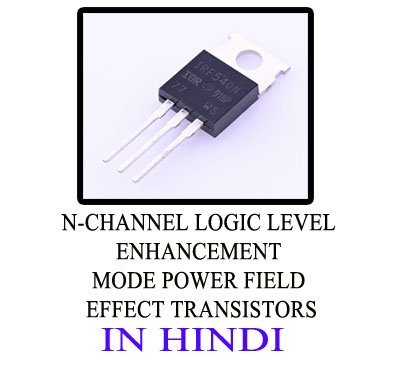N-Channel logic level enhancement mode power field effect transistors
N-channel logic-level enhancement-mode power field-effect transistors (MOSFETs) are essential components in modern electronics, particularly in power switching applications. Here’s a breakdown of what that terminology means:
Key Terms Explained:
- N-Channel:
- This refers to the type of semiconductor material used in the MOSFET’s channel. In an N-channel MOSFET, the majority charge carriers are electrons.
- Logic-Level:
- This indicates that the MOSFET is designed to switch on fully with relatively low gate voltages, typically those provided by logic circuits (e.g., 3.3V or 5V). This is crucial for interfacing with microcontrollers and other digital devices.
- Enhancement Mode:
- In this mode, the MOSFET is normally “off” when no voltage is applied to the gate. Applying a positive voltage to the gate creates a channel that allows current to flow between the drain and source.
- Power Field-Effect Transistor (MOSFET):
- MOSFETs are voltage-controlled switches. They are widely used in power electronics due to their ability to handle high currents and voltages with minimal power loss.
Key Characteristics and Applications:
- Switching Applications:
- These MOSFETs are commonly used in switching power supplies, DC-DC converters, motor control, and other applications where efficient switching is required.
- Low RDS(on):
- A critical characteristic is the “drain-source on-resistance” (RDS(on)). Logic-level power MOSFETs are designed to have a low RDS(on), which minimizes power dissipation when the device is switched on.
- Fast Switching:
- MOSFETs can switch very quickly, making them suitable for high-frequency applications.
- Applications:
- Power supplies.
- Motor control.
- Lighting control.
- Automotive electronics.
- DC-DC converters.
Why Logic Level Matters:
- Traditional MOSFETs often require higher gate voltages (e.g., 10V or more) to fully switch on.
- Logic-level MOSFETs, on the other hand, can be driven directly by the output of digital logic circuits, simplifying circuit design and reducing the need for additional driver circuitry.
When working with these components, it is very important to always refer to the specific datasheets for the component you are working with. The datasheet will provide all of the needed specifications for the component.

